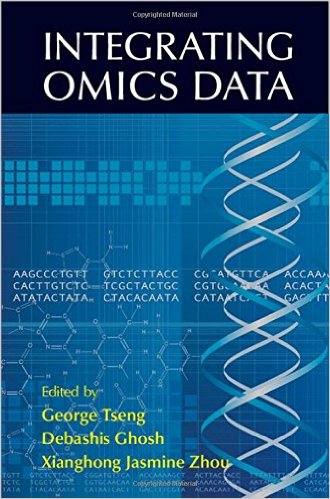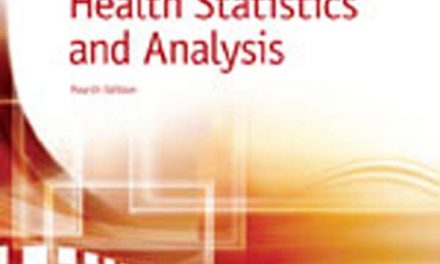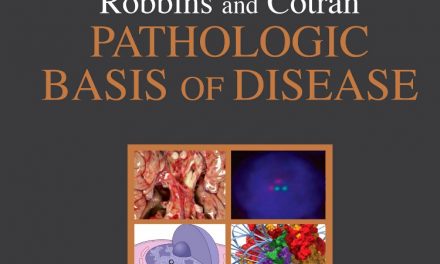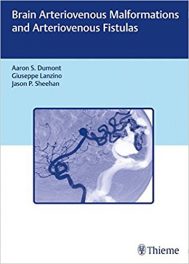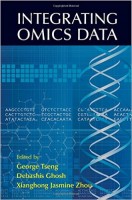 Editors: George C.Tseng, Debashis Ghosh, and Xianghong Jasmine Zhou
Editors: George C.Tseng, Debashis Ghosh, and Xianghong Jasmine Zhou
Publisher: Cambridge University Press – 461 pages
Book Review by: Venkat Subramaniam
The term ‘omics’ is essentially a combined-form term which involves the study of information on an organism. It is a new, shortened version of words like genomic, metabolomic, proteomic, and transcriptomic that respectively study the human genome, and its metabolic, protein and transcription products.
Omics data are now part of a growing new field called precision medicine. This is a creatively innovative process of analyzing data that has yielded solutions to previously difficult cases, such as some patients with certain types of cancer, for example. And it holds great promise as scientists study human diseases by generating vast amounts of data.
Biomedical research, like other types of investigative work, is based on analyzing those vast amounts of data. And success happens when results can be obtained quickly enough to test new medicines and save patients. This unusual book is a pioneering work that looks at various quantitative models used by researchers in a number of fields we name below.
Fifty-three specialists in actuarial science, applied mathematics, bioinformatics, bio-molecular engineering and science, biostatistics, cancer, cancer epigenetics, cellular and molecular medicine, computational biology, computer science, epidemiology, genetics, genomics, machine learning, multi-scale biology, and quantitative medicine – from China, Hong Kong, Singapore and the United States – authored the 19 chapters of this book that we list below to give you an overview of its coverage:
- Introduction
- Horizontal Meta-Analysis
- Meta-Analysis of Genome-Wide Association Studies: A Practical Guide
- MetaOmics: Transcriptomatic Meta-Analysis Methods for Biomarker Detection, Pathway Analysis, and Other Exploratory Purposes
- Integrative Analysis of Many Biological Networks to Study Gene Regulation
- Network Integration of Genetically- Regulated Gene Expression to Study Complex Diseases
- Integrative Analysis of Multiple ChIP-X Data Sets Using Correlation Motifs
- Vertical Integrative Analysis (General Methods)
- Identify Multi-Dimensional Modules from Diverse Cancer Genomics Data
- A Latent Variable Approach for Integrative Clustering of Multiple Genomic Data Types
- Penalized Integrative Analysis of High-Dimensional Omics Data
- A Bayesian Graphical Model for Integrative Analysis of TCGA Data
- Bayesian Models for Flexible Integrative Analysis of Multi-Platform Genomics Data
- Exploratory Methods to Integrate Multisource Data
- Vertical Integrative Analysis (Methods Specialized to Particular Data Types
- eQTL and Directed Graphical Model
- MicroRNAs: Target Prediction and Involvement in Gene Regulatory Networks
- Integration of Cancer Omics Data Into a Whole Cell Pathway Model for Patient-Specific Interpretation
- Analyzing Combinations of Somatic Mutations in Cancer Genomes
- A Mass-Action-Based Model for Gene Expression Regulation in Dynamic Systems
- From Transcription Factor Binding and Histone Modification to Gene Expression: Integrative Quantitative Models
- Data Integration on Non-coding RNA Studies
- Drug-Pathway Association Analysis: Integration of High-Dimensional Transcriptional and Drug Sensitivity Profile
To give you a more distilled view of what this book covers, we name below eight different biological processes and quantitative techniques:
- Bayesian modeling and inference
- Data integration to study gene regulation
- Dimension reduction
- Graphical model and network analysis
- Integration with biological pathway information
- Meta-analysis methods and the homogeneity / heterogeneity issue
- Regularization and penalization methods
- Unsupervised analysis
This high-impact, rare and one-of-a kind work, discusses new cutting-edge biomedical research methods of obtaining and analyzing data on human diseases and ailments. Some of these popular technologies include mass spectrometry, next generation sequencing, microarray and proteomic assays.
Editors:
George C. Tseng is a professor of biostatistics, human genomics, and computational and systems biology in the Department of Biostatistics at the University of Pittsburgh in Pittsburgh, Pennsylvania. He completed his ScD in biostatistics with a concentration in genomics from the Harvard School of Public Health. His research interests focus on statistical and computational method development for analyzing high-throughput omics data.
Debashis Ghosh is professor and chair of the Department of Biostatistics and Informatics at Colorado School of Public Health, University of Colorado Anschutz Medial Campus in Denver. Ghosh was involved with the development of the statistical methods for ONCOMINE, an online data-mining platform used in cancer research and genetics. His research in bioinformatics methodology has been funded by the NIH and NSF grants over the last 10 years. He has published 160+ peer-reviewed articles, book chapters, and commentaries in statistical and scientific literature.
Xianghong Jasmine Zhou completed her PhD at the Swiss Federal Institute of Technology and conducted her post-doctoral training at Harvard University. She is currently professor and director of the Computational Biology and Bioinformatics program at the University of Southern California. She is with the NIH center for knowledge base on disease connections within the MAPGen consortium. She heads the laboratory of computational integrative genomics, addressing the Big Data challenges brought about by the enormous amount of extremely diverse genomic data in public repositories’. She is the recipient of several awards, including an Alfred Sloan fellowship and an NSF Career award.

